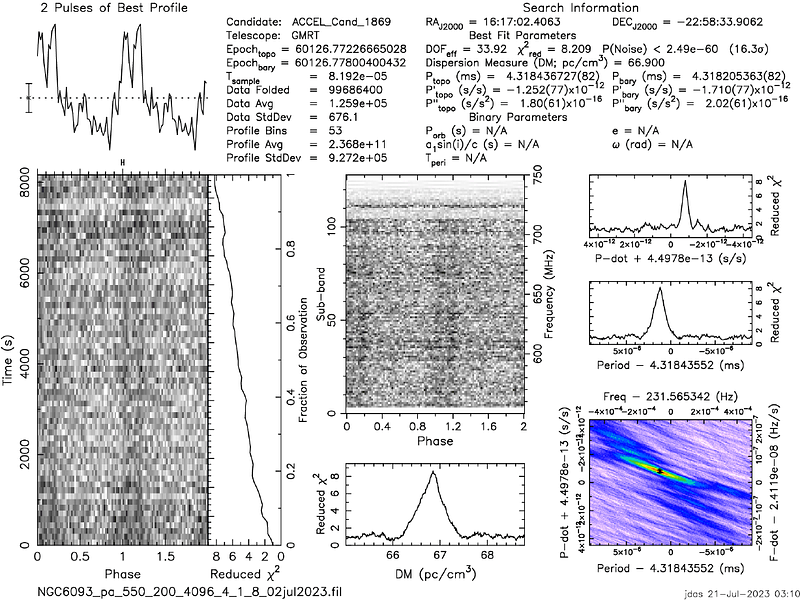Globular Clusters GMRT Pulsar Search (GCGPS) I: Survey description, discovery and timing of the first pulsar in NGC 6093 (M80)

Globular Clusters GMRT Pulsar Search (GCGPS) I: Survey description, discovery and timing of the first pulsar in NGC 6093 (M80)
Jyotirmoy Das National Center for Radio Astrophysics, Jayanta Roy National Center for Radio Astrophysics, Paulo C. C. Freire Max-Planck-Institut für Radioastronomie, Scott M Ransom National Radio Astronomy Observatory, Bhaswati Bhattacharyya National Center for Radio Astrophysics, Karel Adámek Oxford e-Research Center, Wes Armour Oxford e-Research Center, Sanjay Kudale National Center for Radio Astrophysics Giant Metrewave Radio Telescope, Mekhala V. Muley Giant Metrewave Radio Telescope
AbstractThis paper describes the new Globular Clusters GMRT Pulsar Search (GCGPS) survey. This survey aims to find MSPs in the globular clusters (GCs) of the Milky Way using uGMRT. The observations use the uGMRT's Band-4 (550$-$750 MHz) and Band-3 (300$-$500 MHz) receivers, which are well suited for steep-spectral-index radio sources like MSPs; the survey will eventually cover the GCs accessible to the uGMRT sky (i.e. $\delta\:>\:\sim\:-\:53^\circ$), and that is South of $\delta = -17^\circ$ (FAST sky limit) and have not been targeted with the sensitivity of this survey. The observations started in May 2023, having so far resulted in seven new discoveries. In this paper, we present the discovery and follow-up study of the first pulsar from this survey, J1617$-$2258A, a 4.32 ms binary MSP that is also the first to be discovered in the globular cluster NGC 6093. We localised this MSP with arc-sec precision from imaging and obtained the unique timing solution from more than one year of timing observations with the Band-4 (550$-$750 MHz) receivers of the uGMRT. This revealed an unusual binary MSP, with a $\sim$ 19-hour, highly eccentric (e $\sim$ 0.54) orbit having a low-mass companion. This orbital eccentricity allowed the measurement of the rate of advance of periastron for this system, which led to the derivation of its total mass, $1.67 \, \pm \, 0.06 \, \rm M_{\odot}$; this together with the system's mass function implies, for the pulsar and the companion, $M_\mathrm{p} < 1.60 \, \rm M_{\odot}$ and $M_\mathrm{c} > 0.072 \, \rm M_{\odot}$. The system is likely a perturbed MSP-Helium WD system seen at a low orbital inclination.